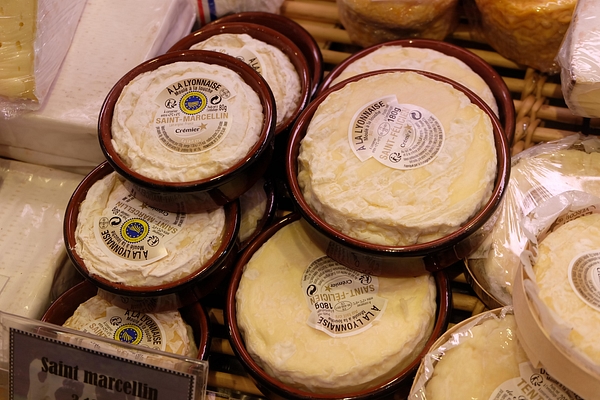Though Saint Félicien was once made from goat’s milk, today this soft cheese from the Rhône Alps region is made from cow’s milk. Creamy and round with a wrinkled ivory-toned rind, Saint Félicien is a dauphinois cheese, which means it originally came from the French province of Dauphiné - you won’t find it on a map though, as it no longer exists!
Time for a bit of French history. You may know that the heir to the throne of France was historically known as le dauphin - the dolphin. Why ‘the dolphin?’ I hear you cry! Well I’m glad you asked. In the 12th century, count Guigues IV of Albon favoured a dolphin on his coat of arms and became known as le dauphin. Later, the state took the name of Dauphiné.

The arms of Dauphiné - this dolphin looks a bit cross, probably because his title is being stolen by the heir to the throne of France no doubt!
Ok, but how did the title of le dauphin transfer to the heir of France? Great question! It just so happens that the last non-royal Dauphin turned out to be in huge debt and had no heir, so in 1349 the King of France snaffled the title away from the province of Dauphiné, decreeing that henceforth the title of le dauphin would be given only to the heir of France. The French must really like their dolphins.
Back to cheese. If Saint-Félicien had a cousin, it would undoubtedly be Saint-Marcellin, a cheese which shares the same texture and a similar flavour. If you’re choosing between the two though, we should mention that Saint-Félicien is twice the size of its cousin and even creamier, which may sway your decision.
After being aged for between two and six weeks, Saint Félicien sports a bloomy rind and a natural beige colour. It is often sold in little terracotta dishes because of its super-soft texture - meaning this cheese needs to be handled with care!
Saint Félicien has a mushroomy, nutty flavour that is best enjoyed between April and September with a chilled bottle of Sancerre or a light, fruity red.

On the other hand, the coat of arms for the Royal Dauphin is much more cheerful. For obvious reasons....to the victor the spoils!

